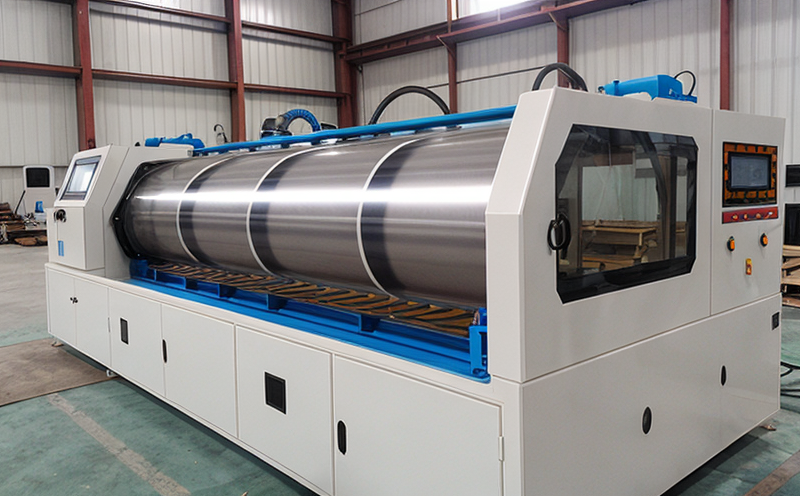ASTM D774 Bursting strength of coated fabrics Hydraulic method
The ASTM D774 test is a critical procedure used to determine the bursting strength of coated fabrics under hydraulic pressure. This testing method is widely employed in industries that require robust and durable materials, such as automotive, aerospace, and construction. The purpose of this service is to ensure that the fabricated products meet stringent quality standards for performance and reliability.
The burst test simulates real-world conditions where a fabric might be subjected to sudden pressure, such as during the deployment of airbags or the operation of certain machinery components. By subjecting coated fabrics to controlled bursts, manufacturers can assess their resistance to rupture under stress. This is essential for ensuring that materials are not only strong but also capable of withstanding the dynamic forces they may encounter in use.
The ASTM D774 method utilizes a hydraulic apparatus to apply pressure to a specimen until it fails. The burst strength is measured in pounds per square inch (psi). Understanding and accurately performing this test requires precise control over environmental factors, including temperature and humidity, as these can significantly impact the material's performance.
For accurate results, specimens must be prepared according to ASTM D774 specifications. This includes ensuring that the fabric is cut into a specific shape and size, typically an ellipse with minor and major axes of 10 inches and 6 inches respectively. The edges are then clamped securely in place on the testing machine.
The burst testing process involves gradually increasing pressure until failure occurs. During this test, it's crucial to monitor not only the applied force but also the rate at which it is increased. This ensures that the test accurately reflects real-world conditions and provides reliable data for analysis.
Post-test evaluation includes measuring the maximum pressure applied before rupture, as well as examining any defects or irregularities in the fabric. These findings help identify potential weaknesses in the design or manufacturing process, allowing for improvements to be made.
The ASTM D774 method is just one part of a comprehensive quality control program aimed at ensuring product excellence. By incorporating this test into their workflow, companies can demonstrate compliance with relevant standards and build trust with customers who demand high-quality materials.
Applied Standards
| Standard | Description |
|---|---|
| ASTM D774-18a | This standard specifies the procedure for determining the bursting strength of coated fabrics under hydraulic pressure. |
| ISO 9065:2013 | International equivalent providing guidelines on how to perform burst testing. |
Benefits
The ASTM D774 Bursting strength of coated fabrics Hydraulic method offers numerous benefits that contribute to enhanced product performance and reliability:
- Improved Quality Control: Ensures consistent quality across production batches by identifying potential issues early.
- Durability Assurance: Verifies that materials can withstand extreme conditions, thereby increasing the lifespan of products.
- Compliance Verification: Helps manufacturers meet regulatory requirements and industry standards.
- Informed Decision-Making: Provides valuable data to guide design changes and material selection processes.
By leveraging this testing method, businesses can gain a competitive edge by producing superior products that meet the highest levels of performance and safety.
Industry Applications
The ASTM D774 Bursting strength test is particularly relevant in several industries due to its focus on materials that need to be both strong and flexible. Some key sectors include:
- Aerospace: Aircraft interiors often require fabrics capable of withstanding high-pressure environments.
- Automotive: Airbags are prime examples where the burst strength of coated fabrics is crucial for safety.
- Clothing & Apparel: Waterproof and breathable materials benefit greatly from this type of testing to ensure they can handle various environmental stresses.
- Construction: Roofing membranes need to be resilient enough to endure harsh weather conditions without tearing or splitting.
In all these cases, the ASTM D774 test provides essential insights into how materials will behave under stress, helping engineers and designers make informed decisions about material selection and product design.





